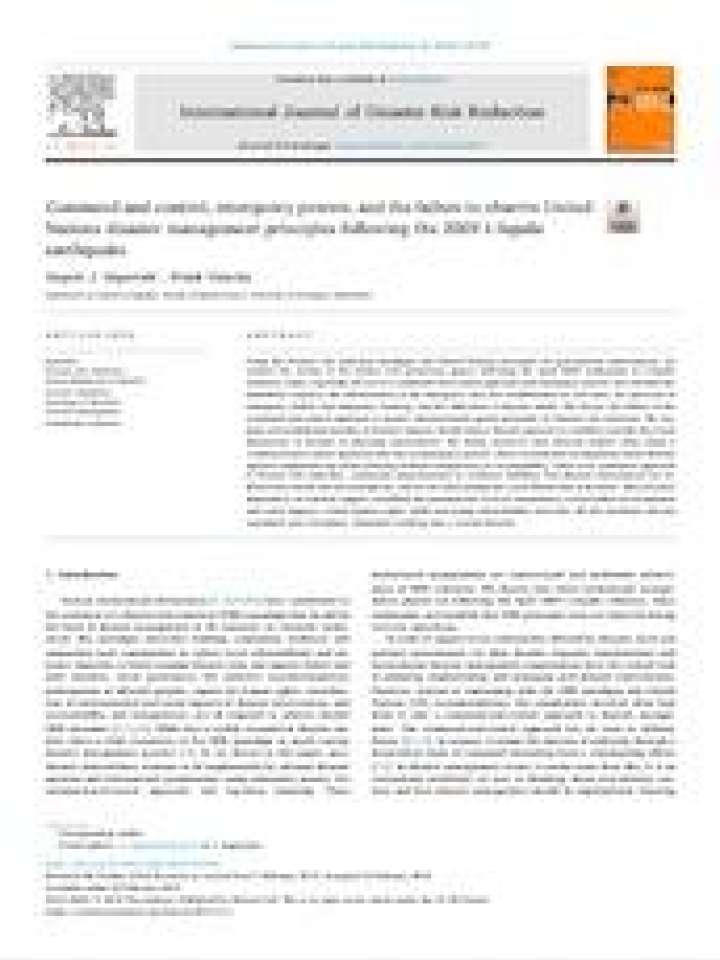Command-and-control, emergency powers, and the failure to observe United Nations disaster management principles following the 2009 L'Aquila earthquake
Using the disaster risk reduction paradigm and United Nations principles for post-disaster interventions, this report analyses the actions of the Italian civil protection agency following the April 2009 earthquake in L'Aquila (Abruzzo, Italy), especially the use of a command-and-control approach and emergency powers. The authors consider the immediate response, the militarization of the emergency area, the establishment of red zones, the provision of emergency shelter and temporary housing, and the utilisation of disaster myths.
The tragedy and multidimensionality of disaster impacts should induce disaster agencies to carefully consider the social dimensions of disaster in planning interventions. The paper finds, however, that decision makers often adopt a ‘command-and-control’ approach and rely on emergency powers. These institutional arrangements mean disaster agencies implement top-down planning without transparency or accountability. There is no systematic approach to disaster risk reduction, community empowerment, or resilience building. Post-disaster interventions are influenced by myths and misconceptions, and do not acknowledge the social dimensions of disasters. The interventions increase dependency on external support, annihilate the potentialities of local communities, create further environmental and social impacts, and violate human rights, while worsening vulnerabilities and risks. All this facilitates disaster capitalism and corruption, ultimately resulting in a second disaster.
Highlights from this study include:
- There is limited awareness of international disaster risk reduction principles.
- Interventions are technocratic, with no awareness of social dimensions of disaster.
- Social and environmental impacts and human rights concerns are not considered.
- Post-disaster interventions can become second disasters.
Explore further
